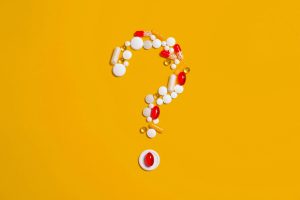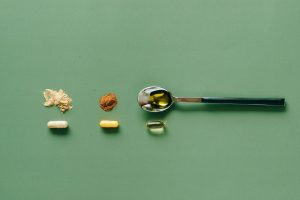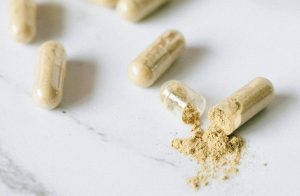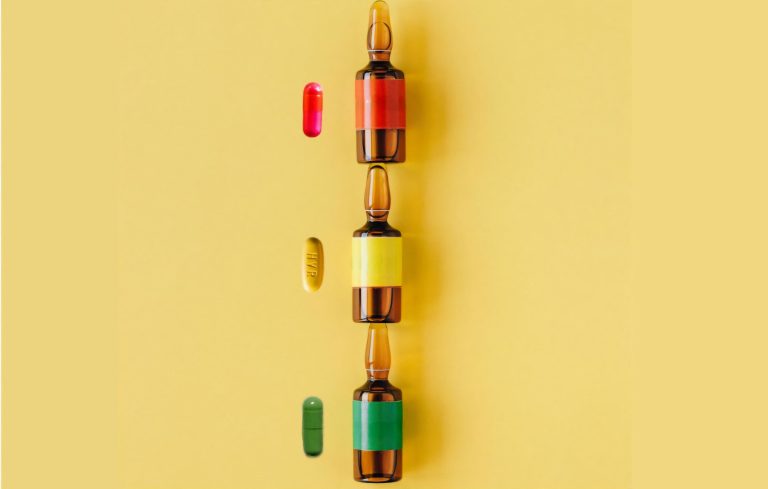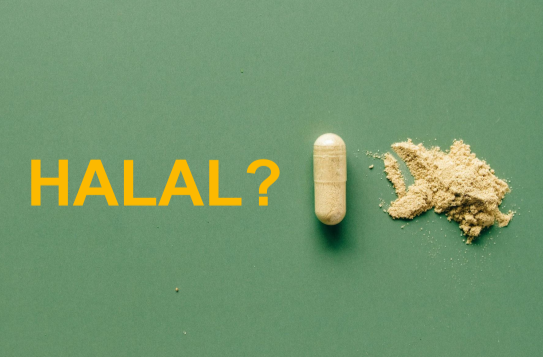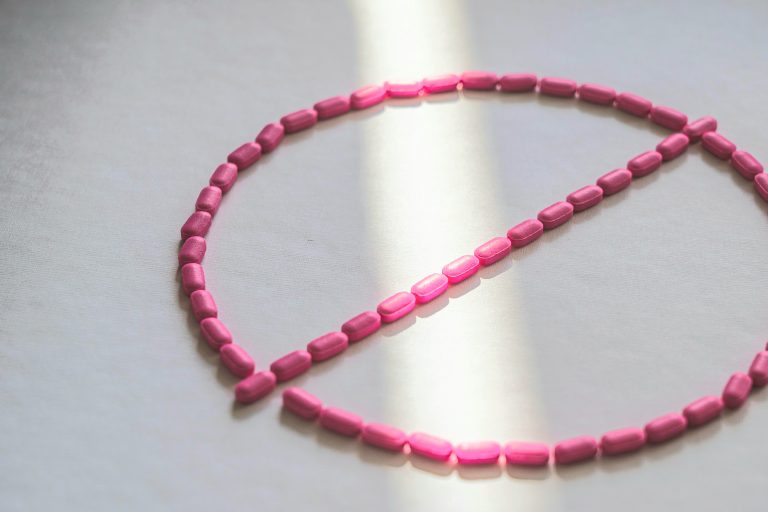Gelatine in Medicines
This resource on gelatine (also known as gelatin) is for the Muslim community (including patients, carers, parents and members of the public). Healthcare professionals may also find this resource useful when supporting people with gathering and understanding information.
It highlights the issues of gelatine (or gelatin) use in medicines that you should be aware of. There is also a table to help you understand if gelatine is halāl and harām, according to each of the four Sunni schools of thought.
- What is gelatine?
- How gelatine is used in medicines
- How the use of gelatine in medicines affects Muslims
- Is all gelatine halāl or harām?
- Contemporary rulings & fatwas on gelatine
- Difference of opinions
- What is transformation (istiḥālah)?
- Halāl alternatives and substitutes
- How do I find out if a medicine contains gelatine?
- Summary
- References
- Further reading
What is gelatine?
Gelatine is a protein from collagen. It is extracted through a process called partial hydrolysis. Sources include:1
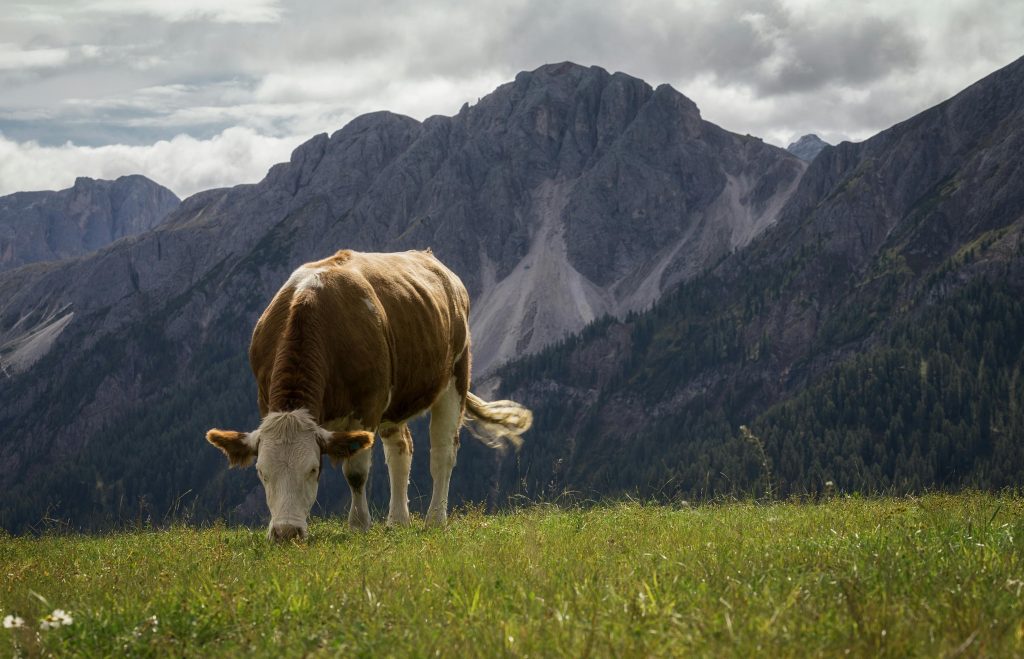
Hide, skin, tendon, bone, and cartilage from animals such as cows, sheep and pigs
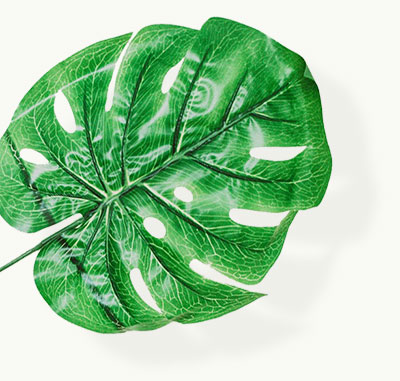
Plants
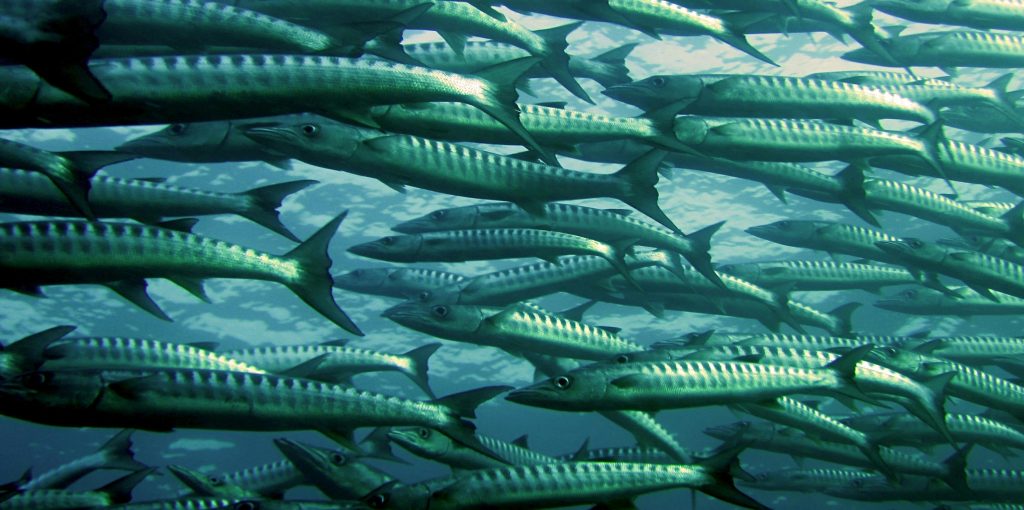
Fish skin and scales
How gelatine is used in medicines
Gelatine has gelling, stabilizing and thickening properties and is mainly used in medicines to make the following:1,2
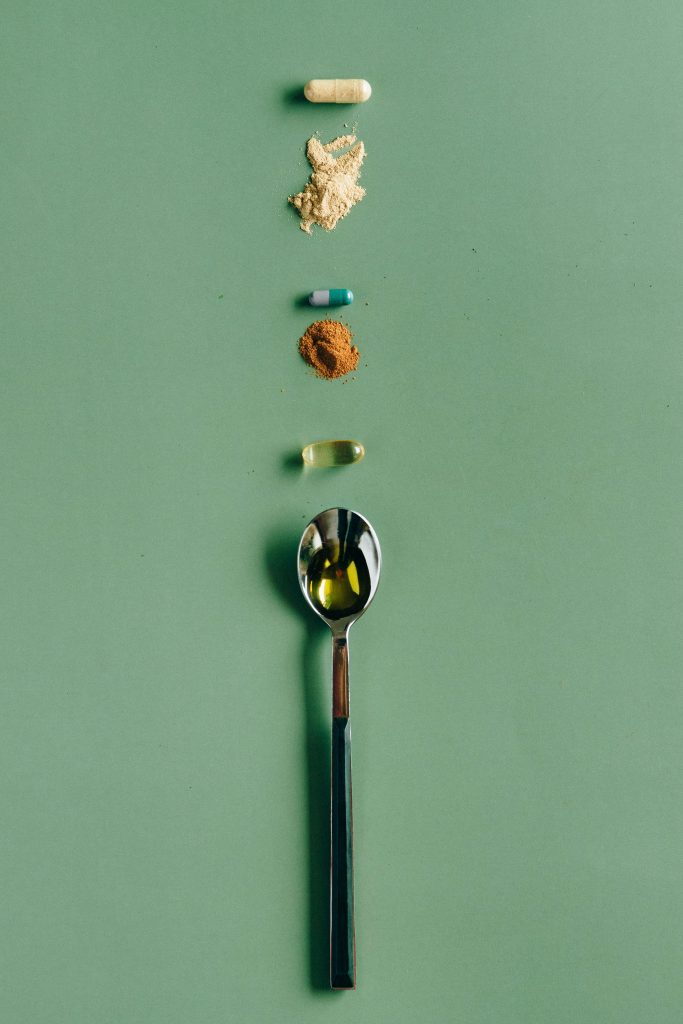
Hard and flexible capsules
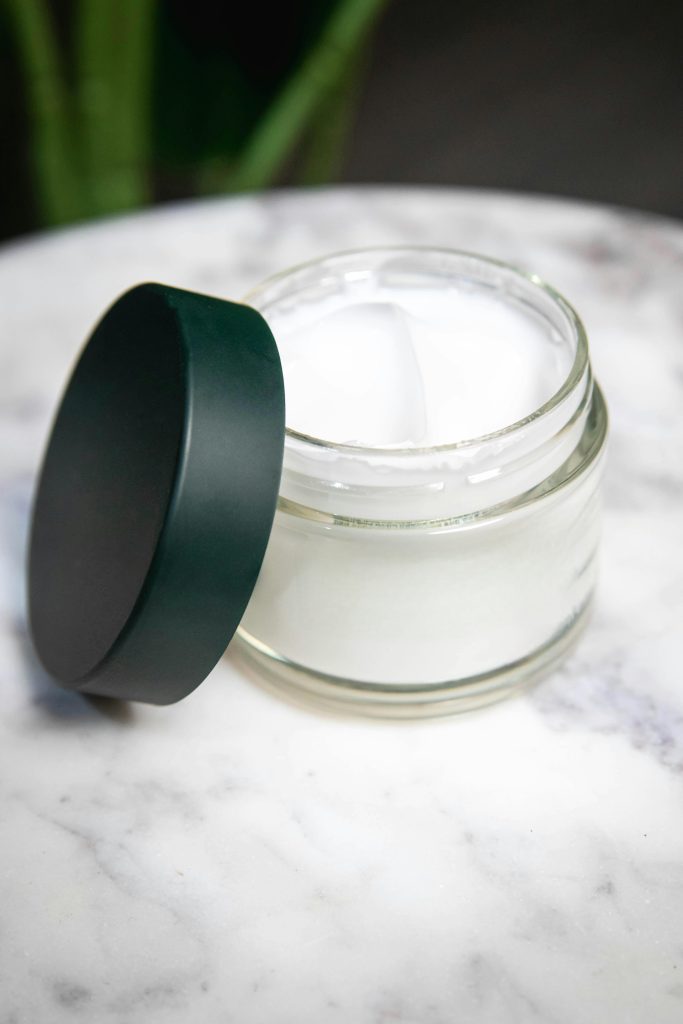
Skin creams (used as a thickener)
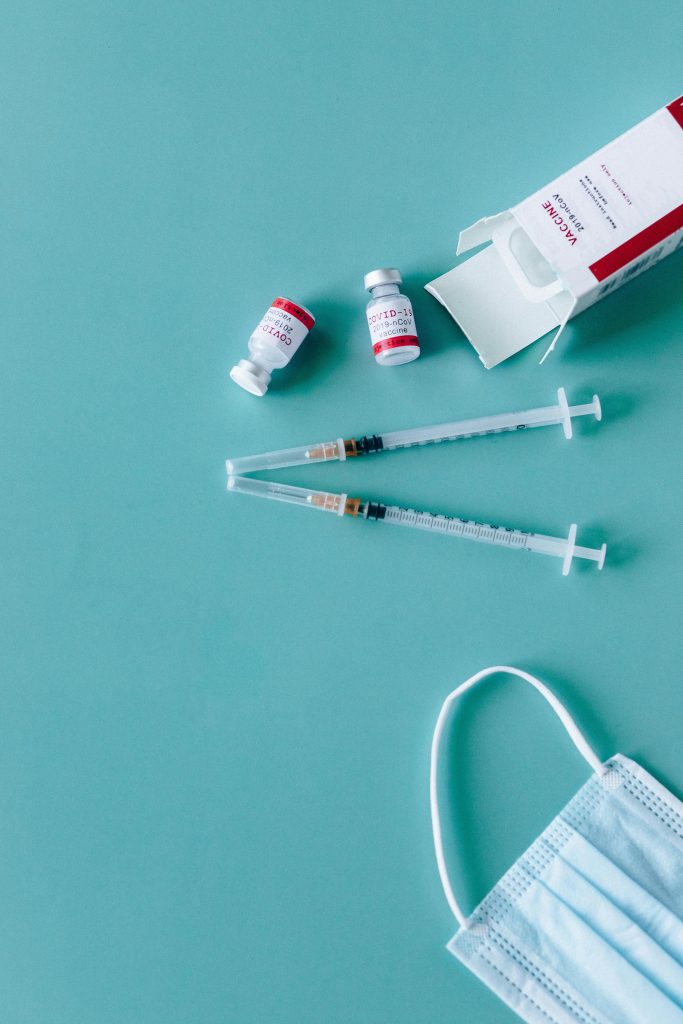
Vaccines (used as a stabiliser)
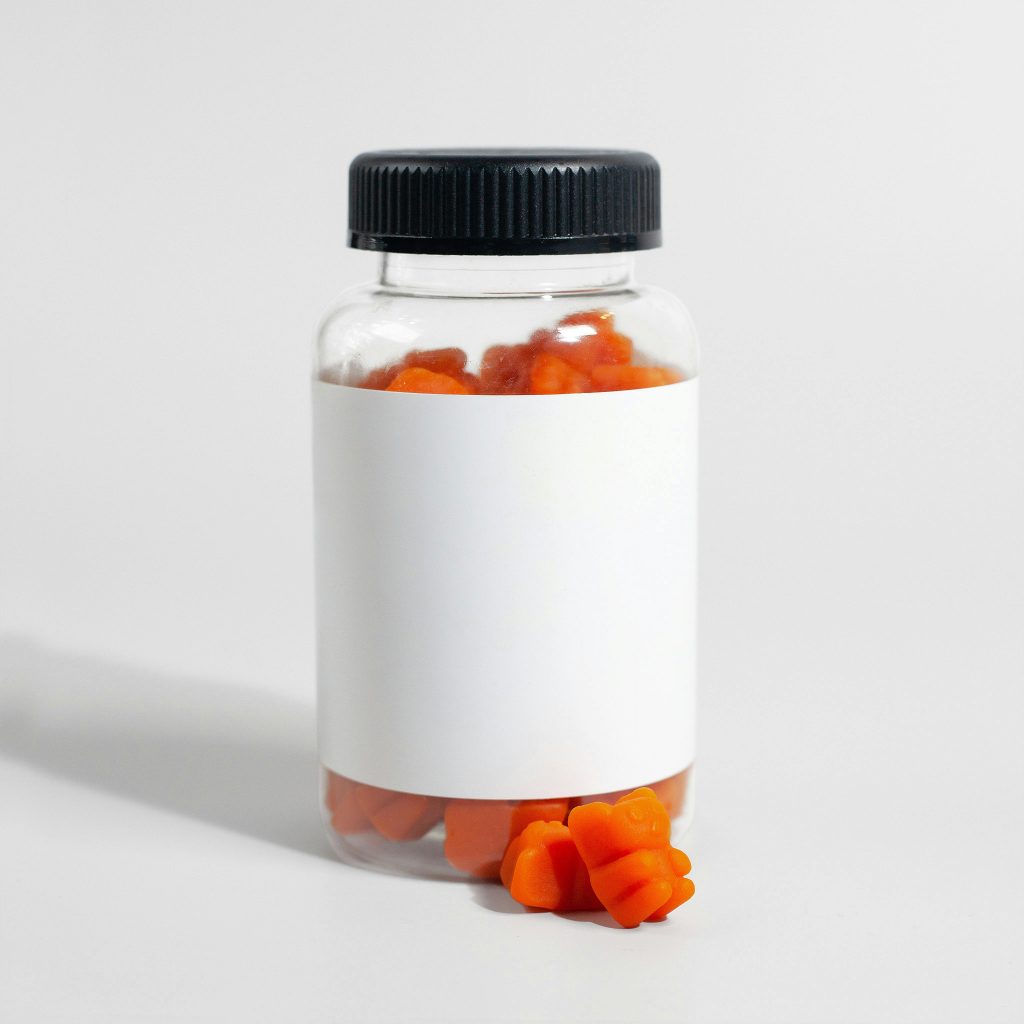
Vitamins and supplements e.g. gummies (used as a gelling agent)
How the use of gelatine in medicines affects Muslims
The Muslim community needs to be aware that 80% of the gelatine used in Europe is of porcine (pig) origin3.
The permissibility of gelatine in Islamic law depends on the source and how it is processed. There is scholarly debate around the concept of transformation (istiḥālah) with regards to gelatine. The main question is whether the process of turning animal-derived collagen into gelatine sufficiently transforms it into a new and legally pure (ṭāhir) substance, making it halāl, even if it originates from a harām animal (e.g. pigs or cattle that is not Islamically slaughtered)4. Some Islamic scholars argue that transformation (istiḥālah) does not take place for gelatine sourced from porcine (pigs) or an animal that is not Islamically slaughtered. This is because the chemical change it undergoes during the manufacturing process is not sufficient for it to be classed as a completely new substance for it to be halāl 4,5. For further information on istihalah, see sections on Is gelatine halāl or harām?, Difference of opinions and What is transformation (istiḥālah)?
The Muslim community should follow their trusted Islamic scholars and use gelatine from certified halāl sources to ensure their medicines align with Islamic guidelines. Therefore, it is important to check for halāl-certification to ensure halāl-compliant manufacturing. However, it is also important to note that information regarding, transformation (istiḥālah) and cross-contamination with harām sources (e.g. pork and alcohol) is not always readily available from manufacturers.
It is important for the Muslim community to:
- Check if your medicine contains gelatine and clarify the source – e.g. if it is from an animal, is it extracted from dry bone, hide, skin, tendon, bone, or cartilage?
- Check for halāl–certification
To find out this information, see section on How do I find out if a medicine contains gelatine and is halāl?. You may need to directly contact the manufacturer of your medicine to find out about the source and for halāl-certification. You can also speak to your local pharmacist for advice and support.
Is all gelatine halāl or harām?
The table below summarises which sources of gelatine are halāl and harām for each school of thought:6
| Source | Ḥanafī | Mālikī | Shāfiʿī | Ḥanbalī |
|---|---|---|---|---|
| Fish | ✅ Halāl | ✅ Halāl | ✅ Halāl | ✅ Halāl |
| Plant | ✅ Halāl | ✅ Halāl | ✅ Halāl | ✅ Halāl |
| Cow (Islamically slaughtered) (including its skin, bones, connective tissue) | ✅ Halāl | ✅ Halāl | ✅ Halāl | ✅ Halāl |
| Cow (non- Islamically slaughtered) (including its skin, connective tissue) | ❌Majority consider harām to consume* | ❌Majority consider harām to consume* | ❌Majority consider harām to consume* | ❌Majority consider harām to consume* |
| Cow hide (non- Islamically slaughtered animal that has undergone the tanning process**) | ❌Majority consider harām to consume* Note: Tanned cow hide/skin is considered legally pure (ṭāhir) and halal to use generally (e.g. shoes and furniture) but not to consume. | ❌Majority consider harām to consume* | ❌Majority consider harām to consume* Note: Tanned cow hide/skin is considered legally pure (ṭāhir) and halal to use generally (e.g. shoes and furniture) but not to consume. | ❌Majority consider harām to consume* |
| Dry bone of any halāl animal e.g. cow or sheep (non- islamically slaughtered) | ✅ Halāl Some scholars say this would be permissible (because there is no blood in dry bone). | ❌Harām Mālikī scholars consider bones legally impure (najis) unless taken from an Islamically slaughtered animal. | ❌Harām | ❌Harām Ḥanbalī scholars consider bones legally impure (najis) unless taken from an Islamically slaughtered animal. |
| Sheep (Islamically slaughtered) | ✅ Halāl | ✅ Halāl | ✅ Halāl | ✅ Halāl |
| Sheep (non- Islamically slaughtered) | ❌Majority consider harām to consume* | ❌Majority consider harām to consume* | ❌Majority consider harām to consume* | ❌Majority consider harām to consume* |
| Pig | ❌Harām* | ❌Harām* | ❌Harām* | ❌Harām* |
*⚠️However, there is a difference of opinion as some Islamic scholars say if the gelatine undergoes transformation (istiḥālah), it may be considered legally pure (ṭāhir) and halāl. Others do not agree that transformation (istiḥālah) takes place. This allows for some flexibility. For further information, see section on what is istiḥālah?
**Tanning process – the process that treats the collagen in animal skin and hides with a chemical agent to make leather7
Contemporary rulings & fatwas on gelatine
Here are some other fatwas on gelatine:4
| Islamic authority | Porcine (pig) gelatine | Bovine (cow) gelatine (not Islamically slaughtered) | Bovine (cow) gelatine (Islamically slaughtered) |
|---|---|---|---|
| Assembly of Muslim Jurists of America (AMJA) | ❌Harām | ❌Harām | ✅ Halal |
| Dar al-Ifta al-Misriyyah (Egypt) | ✅ Halāl (based on transformation), varied opinion | ✅ Halāl (based on transformation) | ✅ Halāl |
| European Council for Fatwa and Research (ECFR) | ✅ Halāl (based on transformation), varied opinion | ✅ Halāl (based on transformation) | ✅ Halāl |
| Islamic Food & Nutrition Council of America (IFANCA) | ❌Harām | ❌Harām | ✅ Halāl |
| Indonesian Ulema Council (MUI) | ❌Harām | ❌Harām | ✅ Halāl |
| International Islamic Fiqh Academy (IIFA) | ❌Harām | ❌Harām | ✅ Halāl |
| The Islamic Fiqh Academy of India (Resolution 66.1) | ✅ Halāl (based on transformation), varied opinion, but majority Ifta’s in Indo-Pak subcontinent consider it harām) | ✅ Halāl | ✅ Halāl |
| JAKIM (Malaysia) | ❌Harām | ❌Harām | ✅ Halāl |
| Majlis Ugama Islam Singapura (MUIS) – Islamic Religious Council of Singapore | ❌Harām | ❌Harām | ✅ Halāl |
| Muslim Judicial Council (South Africa) | ❌Harām | ❌Harām | ✅ Halāl |
| Saudi Arabia’s Permanent Committee for Islamic Research and Ifta’ | ❌Harām | ❌Harām | ✅ Halāl |
Difference of opinions
There is a difference of opinion amongst Islamic scholars on whether gelatine sourced from animals, such as sheep and cows, that are not Islamically slaughtered is halāl:
- If the source of gelatine is from hide and undergoes the tanning process – some Islamic scholars say this would be halāl to use generally (e.g. for making footwear and furniture) as it is considered legally pure (ṭāhir), but would be harām to consume.5
- If the source of gelatine is from dry bone – some Islamic scholars say this would be halāl to consume (because there is no blood in dry bone).5
There is a difference of opinion amongst Islamic scholars regarding whether animal gelatine undergoes transformation (istihalah). However, most of the contemporary Islamic scholars declare animal gelatine as impermissible (harām) because:
- It is difficult to establish the source of gelatine – it is usually derived from pig or an animal that is not Islamically slaughtered (dhabīḥah)4
- The chemical change that takes place during the manufacturing processes of gelatine is considered insignificant – the collagen in porcine (pig) (i.e. the former substance) is almost chemically identical to gelatine (i.e. the latter substance). 5 8 9 10
What is transformation (istiḥālah)?
Halāl alternatives and substitutes
If you are seeking halāl products, look for halāl-certified bovine, plant-based (e.g. pectin and agar agar) or fish sources of gelatine (where available and possible). Alternatively, you could look for formulations that are gelatine free (where available and possible).
How do I find out if a medicine contains gelatine?
You can check if a medicine contains gelatine using the relevant product patient information leaflet (PIL) or summary of product characteristics (SPC) which is available on the electronic medicines compendium (emc) website. However, you may need to contact the manufacturer to find out the source and for halāl-certification. You may also find our resource on ‘How to find out if a medicine contains harām ingredients or excipients’ useful. If you are still unsure if your medicine contains gelatine, speak to your local healthcare professional such as your local pharmacist.
It is important to remember that even if a medicine contains a harām ingredient or excipient, it does not always mean it is prohibited to take. If you find out a medicine contains harām ingredients or excipients from harām sources, then see our guide on ‘What to do if a medicine contains harām ingredients or excipients’. The guide includes the conditions of when it is acceptable to take a medicine that contains harām ingredients or excipients from harām sources. It may also help you make informed decisions on the next steps in discussions with your healthcare professional. If you are still not sure if it is permissible to take your medicine, then speak to your local Imam or trusted Islamic scholar (ideally who has relevant knowledge and expertise in the Fiqh of medicines).
Summary
- Porcine gelatine remains controversial
- Majority of Islamic scholars consider it harām as istihālah (transformation) has not occurred
- Some Islamic scholars and institutions (e.g. ECFR, the Fiqh Academy of India, and Sheikh Yusuf al-Qaradawi) consider it halāl as they consider that it has undergone istihālah (transformation). They consider the chemical transformation of gelatine as making it halāl, even if sourced from porcine or harām bovine origins
- Gelatine derived from plant sources is halāl e.g. pectin and agar agar
- Gelatine derived from fish sources is halāl
- Gelatine derived from bovine is considered halāl only if the cow was Islamically slaughtered
- Gelatine from animals that are not Islamically slaughtered is generally considered legally impure (narjis) and harām by the majority. However, some Islamic scholars say that:
- If the gelatine comes from hide that undergoes the tanning process, this would be permissible (halāl) to use for other purposes, but will remain harām to consume
- If the gelatine comes from dry bone, this would be halāl to consume
- If the gelatine undergoes transformation (istihālah), this would be halāl However, some Islamic scholars say transformation (istihālah), does not take place, because the chemical change is not sufficient for it to be classed as a completely new substance
- Some authorities (e.g. Fiqh Academy of India, Sheikh Yusuf al-Qaradawi, and ECFR) permit it only if transformation (istihālah) has taken place.
- Most committees, including Saudi Arabia’s Permanent Committee, MUIS, AMJA, and JAKIM, hold the opinion that gelatine from harām sources remain harām, as they do not accept transformation (istihālah) as a valid criterion for permissibility
- You should follow your school of thought – e.g. Ḥanafīs & Mālikīs may accept transformation (istihālah) but not in the case of gelatine (according to most), while Shāfiʿīs & Ḥanbalīs are stricter and are more likely to consider it harām
- You can check if the medicine you are taking contains gelatine using the PIL or SPC. If you are unsure, then speak to your local pharmacist
- You could check if there is halāl-certification available for the medicine from the manufacturer, to ensure halāl-compliant manufacturing
- If you are unsure if your medicine is permissible to take, then speak to your local Imam or trusted Islamic scholar (ideally who has relevant knowledge and expertise in the Fiqh of medicines)
- If you are seeking halāl products, look for fish, plant-based or halāl-certified bovine sources (where available and possible).
References
- Department for Environment, Food & Rural Affairs Import of gelatine and collagen for human consumption – Import Information Note (IIN) BLGC/1
https://www.gov.uk/government/publications/gelatine-and-collagen-for-human-consumption-import-information-notes/import-of-gelatine-and-collagen-for-human-consumption-import-information-note-iin-blgc1 ↩︎ - UK Health Security agency Vaccines and porcine gelatine
https://www.gov.uk/government/publications/vaccines-and-porcine-gelatine/vaccines-and-porcine-gelatine ↩︎ - Yasemin Demirhan, Pelin Ulca, Hamide Z. Senyuva, Detection of porcine DNA in gelatine and gelatine-containing processed food products—Halal/Kosher authentication, Meat Science, Volume 90, Issue 3, 2012, Pages 686-689, Accessed from: https://www.sciencedirect.com/science/article/abs/pii/S0309174011003512 ↩︎
- Guidelines for the Permissibility of Gelatin in Islamic Jurisprudence by Shaykh Dr Rafaqat Rashid ↩︎
- Al Balagh Academy Fiqh of Other Haram Ingredients and Excipients by Mufti Sarfaraz ↩︎
- Comprehensive List of 40 Animal-Derived Excipients in Medication by Shaykh Dr Rafaqat Rashid ↩︎
- Benedict Nnachi Alum (2024). Tannins and Leather: Chemistry, Tanning Processes, and Environmental Impacts. NEWPORT INTERNATIONAL JOURNAL OF SCIENTIFIC AND EXPERIMENTAL SCIENCES, 5(3):33-37. https://doi.org/10.59298/NIJSES/2024/10.5.333337 ↩︎
- Encyclopaedia of food colour additives, Burdock (1997) vol. 1 pg.1165 ↩︎
- Encyclopaedia of Pharmaceutical technology, J. Swarbick (2007) pg. 1883 ↩︎
- Hides and Skin for the tanning industry, Leach (1995) pg. 65 ↩︎
- Siddiqi, Nasrullah. (2020). Comparative Study of Istihalah Shariah and Chemical Changes. WHS 2020. 89-94. Accessed 27.1.2025 from: https://www.researchgate.net/publication/354339446_Comparative_Study_of_Istihalah_Shariah_And_Chemical_Changes ↩︎
- Jamaludin, Mohammad & Ramli, Mohd Anuar & Hashim, D.M. & Ab Rahman, Suhaimi. (2012). Fiqh Istihalah: Integration of Science and Islamic Law. Revelation and Science. 2. 49-55. Accessed 27.1.2025 from: https://pmc.ncbi.nlm.nih.gov/articles/PMC2014957/ ↩︎
Further reading
Note: Some organisations may have multiple websites or online representations. The links below are based on the most referenced official sites.
- Assembly of Muslim Jurists of America (AMJA) – an independent, nonpartisan, nonprofit organization established to provide Islamic jurisprudential guidance to Muslims living in the west
- Dar al-Ifta al-Misriyyah (Egypt) – Egypt’s official Islamic legal research centre, issuing fatwas and providing guidance on Islamic law
- European Council for Fatwa and Research (ECFR) The 23rd Ordinary Session of The European Council for Fatwa and Research final statements – ECFR provides collective juristic opinions (fatwas) to address the needs of Muslims in Europe, facilitating their integration while preserving their Islamic identity
- Islamic Food and Nutrition Council of America (IFANCA) Gelatin: Manufacturing, Uses, Health Affects, and Issues of Halal/Haram – IFANCA is a global leader in halal certification, providing services to industries and consumers to ensure compliance with halal standards
- Indonesian Ulema Council (Majelis Ulama Indonesia – MUI) – MUI is the top Islamic clerical body in Indonesia, responsible for issuing fatwas and providing guidance on Islamic matters to Indonesian Muslims
- International Islamic Fiqh Academy (IIFA) Transmutation and Dilution of Additives in Food and Medication – IIFA is a universal scholarly organization and a subsidiary organ of the Organization of Islamic Cooperation (OIC)
- The Islamic Fiqh Academy of India – deliberates on contemporary issues to provide juristic decisions relevant to the Indian Muslim community
- Department of Islamic Development Malaysia (JAKIM) – the Malaysian government agency responsible for Islamic affairs, including halal certification and the issuance of fatwas
- Majlis Ugama Islam Singapura (MUIS) – Islamic Religious Council of Singapore – MUIS oversees the administration of Muslim affairs in Singapore, including halal certification, mosque management, and issuing fatwas
- Muslim Judicial Council (MJC) (South Africa) – MJC serves the Muslim community in South Africa by providing religious guidance, halal certification, and dispute resolution
- Permanent Committee for Scholarly Research and Ifta (Saudi Arabia) – official Saudi body responsible for issuing fatwas and conducting Islamic research under the supervision of the Council of Senior Scholars.


